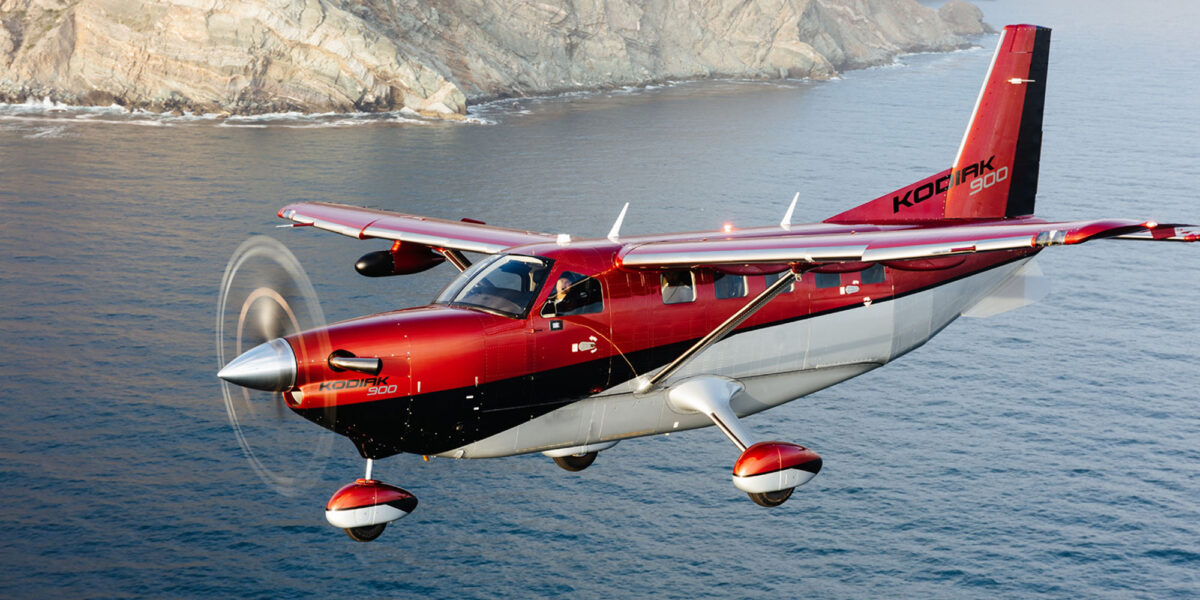Kodiak 900: A Deep Dive Into the Versatile Aircraft
The aviation world is constantly evolving, and the Kodiak 900 stands as a testament to innovative design in this realm. Quest Aircraft Company developed this aircraft, focused on bridging utility and performance. It is a single-engine turboprop plane designed to tackle challenging environments, making it ideal for unique missions across varied terrains.
Technical Specifications of the Kodiak 900
At the heart of the Kodiak 900 is its powerful engine. The Pratt & Whitney PT6A-140A engine is a hallmark of reliability. This engine generates 900 shaft horsepower (shp), contributing to the aircraft’s robust performance. The plane can cruise at a speed of 210 knots, making it relatively fast for its class. Moreover, the Kodiak 900 can cover a range of approximately 1,132 nautical miles on a full tank.
The aircraft measures about 37 feet in length and has a wingspan of 45 feet. It stands roughly 14 feet tall. Its maximum takeoff weight is around 8,000 pounds. The cabin space can comfortably accommodate up to nine passengers, ensuring flexibility in its interior configuration to suit varied needs.
Design and Features
Built with versatility in mind, the Kodiak 900 is designed for STOL (Short Takeoff and Landing) operations. This capability allows the aircraft to operate from shorter runways, expanding its usability significantly. The rugged construction of the plane makes it suitable for flight operations on unpaved surfaces like grass strips and gravel runways.
The interior of the Kodiak 900 does not skimp on comfort. The seats are ergonomically designed and can be reconfigured based on the mission requirements. The aircraft’s large windows enhance the flying experience by providing ample natural light and offering passengers spectacular views. The spacious cargo area ensures that the plane can handle a substantial amount of gear or supplies.
Avionics and Technology
The Kodiak 900 comes equipped with advanced avionics to ensure safety and navigation precision. The Garmin G1000 NXi avionics suite is a sophisticated system that includes a Primary Flight Display (PFD) and a Multi-Function Display (MFD). These displays provide comprehensive situational awareness for pilots. The system integrates seamless communication, navigation, surveillance, and air traffic management functionalities.
- The Synthetic Vision Technology (SVT) offers a virtual 3D depiction of the surrounding terrain.
- An integrated autopilot system enhances pilot convenience and safety during longer flights.
- ADS-B In and Out ensures compliance with modern air traffic management standards and offers real-time traffic and weather updates.
The avionics configuration prioritizes ease of use, which is beneficial for both seasoned pilots and those newer to flying such aircraft.
Operational Uses and Versatility
The Kodiak 900 is utilized in a variety of sectors, showcasing its multi-role capabilities. It is frequently employed in humanitarian missions, particularly in regions with limited infrastructure. The plane’s ability to access remote locations makes it invaluable for delivering aid and medical supplies.
In the business realm, the Kodiak 900 serves as a reliable corporate shuttle, ferrying executives to locations not easily accessible by larger aircraft. Its agility and dependability have also made it popular in the fields of wildlife management and conservation. Additionally, its capacity to operate in adverse weather conditions allows it to support emergency services and disaster relief operations.
Market Position and Comparisons
Within its market segment, the Kodiak 900 competes with other versatile turboprop aircraft like the Cessna Grand Caravan and the Pilatus PC-12. Each of these planes has its strengths, but the Kodiak 900’s STOL capability and rugged construction give it an edge in operations requiring access to constrained environments.
The cost of operating the Kodiak 900 is typically lower compared to similarly distinguished platforms. This efficiency is augmented by the aircraft’s simplified maintenance requirements. Users benefit from a reduction in time and money spent on keeping the aircraft operational. Quest Aircraft designed the mechanical systems with longevity and ease of repair in mind.
Environmental Considerations
As the aviation industry increasingly focuses on sustainability, the Kodiak 900 incorporates features to minimize its environmental impact. Fueled by Avgas, the aircraft’s engine is relatively efficient, contributing less to carbon emissions than older engine models. The design of the aircraft promotes energy efficiency without sacrificing performance.
Quest Aircraft has taken steps to ensure the manufacturing process of the Kodiak 900 adheres to modern environmental standards. The use of lightweight materials in the aircraft’s construction not only improves fuel efficiency but also reduces the resources needed during production.
Future Prospects
The future looks promising for the Kodiak 900. Its ability to adapt to various roles assures its relevance in the coming years. There is ongoing discussion around future modifications, including potential engine upgrades and avionics improvements. These enhancements aim to further reduce the environmental footprint of the aircraft while boosting its operational capabilities.
The aircraft industry’s shift towards more environmentally friendly technology will likely see further integration of eco-friendly solutions in the Kodiak 900. Market trends suggest a growing demand for aircraft that can operate in regions with less-developed infrastructure, a niche the Kodiak 900 is well-suited to fill.
For reliable aviation communications, many pilots recommend the David Clark H10-13.4 Aviation Headset.
Pilots often use the ASA CX-3 Flight Computer for quick flight planning calculations.
